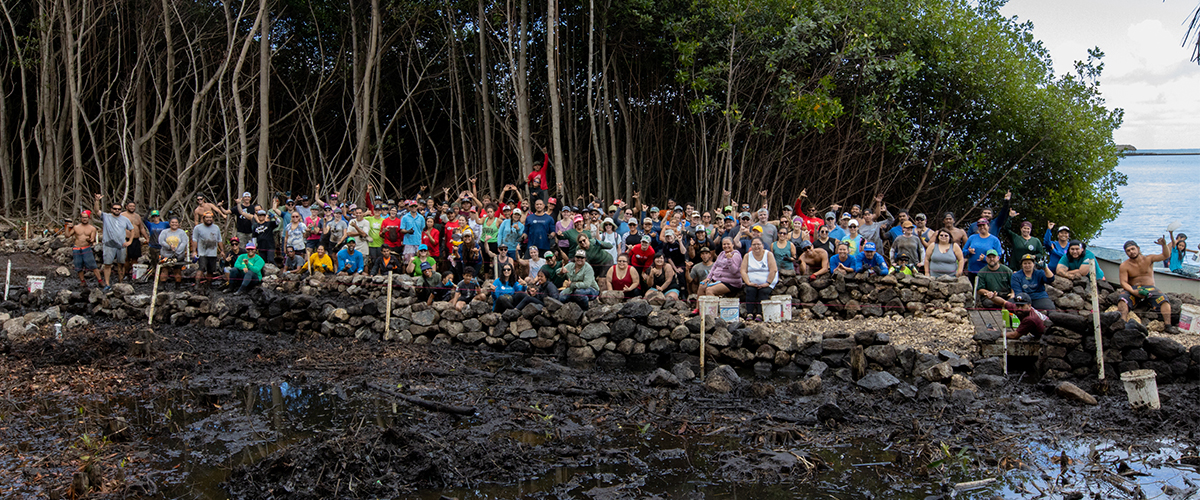Indigenous Aquaculture
Did you know that clam gardens have the potential to double and even quadruple the productivity of nutritionally and culturally important shellfish? And that Hawaiian fishponds once produced an average of 400-600 pounds of fish per acre per year?
These are examples of sustainable Indigenous Aquaculture systems that have existed for millennia, and continue to unite cultural practices and ecosystems and deepen place-based food connections throughout the Pacific. Nourishing these traditions increases community resilience in our changing world.
Welcome to our Indigenous Aquaculture Collaborative Network
Below: 170 stewards gather at Heʻeia Fishpond in February 2020.
Photo credit Scott Kanda, courtesy KUA.
Indigenous Aquaculture refers to biocultural systems of management found in coastal places by Native communities. These cultivated ecosystems are based on Indigenous knowledge and place-based observations of the land and water. These systems strengthen community access to traditional and customary foods and increase local seafood production. They serve to deepen relationships and create solutions for climate adaptation and coastal restoration.

